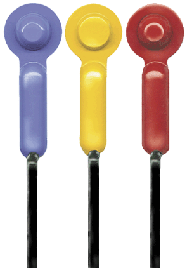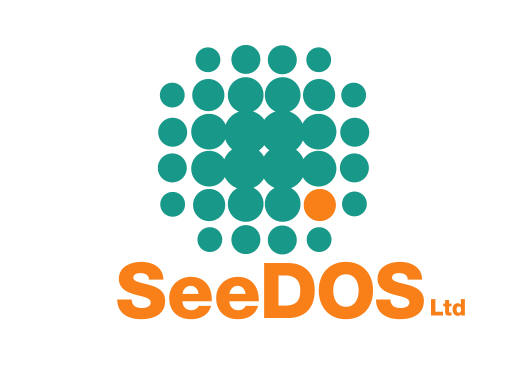|
4-25 MeV Electron QED Diode Detectors, SeeDOS Code 305120
 |
|
The QED™ features a flat design for easy patient placement. It is ideal for treatments where diode placement is normal to the beam. QED's are available in three photon energy ranges, and a single range for all electron energies.
|
NEW (April 2003) IMRT Mosfet Diode and Tabula Software, pdf brochure
Applications
QED™ diode detectors should be used in situations where the beam is normal or close to normal to the patient skin surface.
Energy Ranges – choosing the right QED™
QED™ detectors are offered in three photon energy ranges, a single electron energy range, and a skin detector.
|
a) P/N 111400-0 |
1-4 MV
|
| |
b) P/N 111500-0 |
6-12 MV
|
| |
c) P/N 111600-0 |
15-25 MV |
| |
d) P/N 111200-0 |
electron energies |
| |
e) P/N 111300-0 |
Skin (no buildup) |
|
Accuracy
The QED™ offers exceptional accuracy for a flat diode detector.
When tested on top of 6 cm of virtual water, variation in directional response is +/- 0.5% for 30°, and +/- 1.0% for 45° for 6MV beams.
Angular dependence for 6 MV

Lifetime
As with any diode, as the QED™’s are repeatedly used their sensitivity will change. This rate of change will depend on the energies used and the frequency of use. Once it is deemed necessary, the diode can be re-calibrated and is once again ready for use. It is important to know that QED™ life-expectancy is not limited by radiation exposure – the more it is used
the less it’s response characteristics will change. Long term use and accuracy is more an issue of proper handling and care. Broken Co-Ax connectors and cables are the most common cause of failure.
Construction
QED™ construction varies according to the build-up material used.
The
QED semiconductor series consists of four photon detectors for different ranges and one electron detector for all energies. The QED series is the most economical in-vivo detector today.
Specifications
|
Silicon die |
p type diode | |
Effective detection thickness |
50 um | |
Pre-irradiated to |
10 kGy at 10 MeV | |
Sensitivity |
40 nC/Gy | |
Sensitivity degradation rate |
1%/kGy at 10 MeV | |
Impedance at 10 mv reverse bias |
200 M ohm | |
Cable diameter |
2.5 mm | |
Cable connector |
BNC | |
Effective detection area |
1.65*1.65 mm2 |
Specification for Individual Detectors
|
|
Electron
|
Skin
|
1-4 MV
|
6-12 MV
|
15-25 MV | |
Buildup Material
|
Acrylic |
None |
Aluminum |
Brass |
Brass | |
Total buildup(g/cm2) |
0.3 |
0.11 |
1.03 |
1.85 |
3.04 |
Angular
Response
(100% at 00) |
300
450
600 |
99%
96%
--- |
97%
95%
--- |
99.0%
98.5%
98.0% |
99.5%
99.0%
102.5% |
98.0%
97.0%
96.0% | |
Energy used for directional response |
6 MeV |
Co-60 |
Co-60 |
6 MV |
18 MV | |
COLOR |
SILVER |
BLACK |
BLUE |
GOLD |
RED | |
Model Number |
negative output |
111200-0 |
111300-0 |
111400-0 |
111500-0 |
111600-0 | |
positive output |
111200-1 |
111300-1 |
111400-1 |
111500-1 |
111600-0 |
Schematic top view and cross section of QED™ detectors

Features
Flat design allows for easy and reliable placement on patient skin surface
Advanced p-type die design is accurate and responsive
Compatibility with any diode based dosimetry system
Long lifetime if handled properly
Intelligent pricing
A pdf QED Electron Diode Detector brochure is available, please click here If you are interested in any of the products mentioned here, please complete a Quotation Request Form or an
Enquiry Form so that we may promptly respond to your detailed request. |
TOP OF PAGE
Please contact Colin Walters at cwalters@seedos.com if you would like further information or you have questions
or comments about this web site.
SeeDOS Ltd, 26, The Maltings, Leighton Buzzard, Bedfordshire LU7 4BS, United Kingdom
Tel: +44 1525 850 670 • Fax: +44 1525 850 685
|
| 